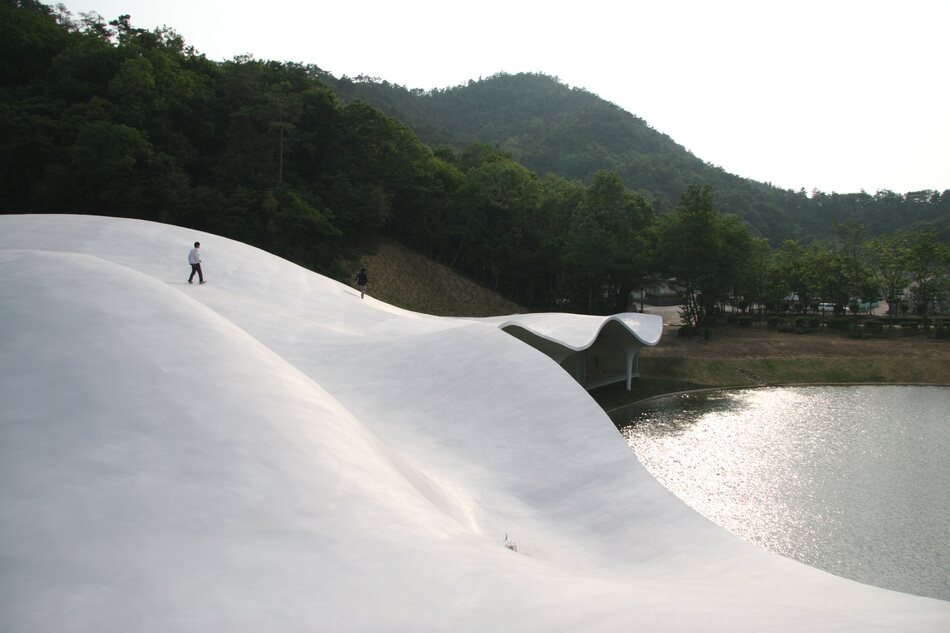
TECHNOSCAPE – The Architecture Of Engineers
MAXXI Museum, Rome
October 01, 2022 – April 10, 2023
A major exhibition is opening at MAXXI which investigates the relationship among architecture, structural engineering and ecological, technological and digital innovation, all increasingly crucial for our relationship with space and our planet. The story starts with iconic buildings such as Nervi’s Palazzetto dello Sport (Sports Arena9 in Rome, Frei Otto’s Olympic Multihalle or the Beaubourg in Paris, and extends to structural masterpieces from all over the world: Ove Arup’s Sydney Opera House, Lina Bo Bardi and Figuereido Ferraz’s São Paulo Museum, Buckminster Fuller’s domes, Mahendra Raj’s Hall of Nations in Delhi, Beda Amuli’s market in Dar Es Salaam or the masterpieces by Mamoru Sasaki and other Japanese structural engineers. All such buildings would not have seen the light of day without the extraordinary collaboration between architects and engineers. Building upon this reconnection in space and time, the exhibition casts a glance into the future through the installations and experiments of seven university research centres from around the world, from MIT (Massachusetts Institute of Technology) to Princeton through to the main European polytechnic universities, including the IUSS in Pavia.

All of this is TECHNOSCAPE. The Architecture of Engineers, as curated by Maristella Casciato and Pippo Ciorra with Eni as the main partner. The exhibition, which will be hosted by MAXXI from 1st October 2022 to 10th April 2023, is an important new addition to the Museum’s research strand investigating the relationship among art, architecture, science and new technologies. There are two main reasons why such an exhibition has been organised in a museum of art and architecture. Firstly, there is the conviction that the current political and social-ecological urgencies have brought artistic and scientific disciplines very close together – thus the two “different sisters” architecture and engineering – as it has already happened at other times in history. Secondly, there is the impression that engineering is at a major turning point: from modernist structures made of reinforced concrete, iron and glass to a myriad of new materials; from construction to the development of tools and strategies to make buildings sustainable; from calculation to algorithm; from male dominance to very pronounced gender diversity.

Giovanna Melandri, President of Fondazione MAXXI, comments: “TECHNOSCAPE is a manifesto exhibition for us since MAXXI is the National Museum of Modern and Contemporary Architecture that Italy one lacked, a point of reference and a debate venue with a global and interdisciplinary scope. The overall aim is to rekindle attention to the themes of urban life, sustainability policies, and the protection of the environment and regions. Because it is in our DNA as a museum-laboratory, we also want to explore and experiment with dialogue among creativity, knowledge and different techniques. This encyclopedic and spectacular exhibition is fully in keeping with the spirit of the times, which calls for collaboration between the arts, sciences, and social sensibilities. It is Ursula von der Leyen’s approach to the New European Bauhaus, and it is the spirit that fuels the GRANDE MAXXI project, an interdisciplinary pole projected into the future and entirely congruent with the exhibition TECHNOSCAPE.”

In the words of curators Maristella Casciato and Pippo Ciorra, “TECHNOSCAPE is a very important exhibition because it not only brings to light the contribution of great structural designers to the history of architecture but also because it casts a wide-ranging glance at the future of engineering and its increasingly evident shift from the world of structures to that of technology, new materials, environmental action, digital manufacturing and robotics, as investigated here through collaboration with seven prestigious university research centres from all over the world.”

The story revolves around two strands: construction engineering and technological innovation. The first section, which is divided into eight thematic areas, features more than 40 masterpieces from the Post-war period to the present day, often the result of an extraordinary collaboration between structural designers and masters of architecture such as Frank Lloyd Wright, Le Corbusier, Jörn Utzon, Louis Kahn, Renzo Piano, Rem Koolhaas, SANAA, Toyo Ito, Zaha Hadid, Kengo Kuma, Christian Kerez and many others. On display are drawings, models, archive documents, videos and photographs, including those by Walter Niedermayr, Iwan Baan, Ezra Stoller, Leonardo Finotti and Olivo Barbieri, to name but a few. The current drive of engineering towards ecological engagement and technological experimentation is instead investigated through the installations of seven university research centres from around the world: ETH Zurich, University of Stuttgart, Technische Universität Berlin, the University for Applied Arts Vienna, Massachusetts Institute of Technology (MIT), Princeton University and the Eucentre Foundation of the IUSS in Pavia, which specialises in earthquake engineering research.
more. www.maxxi.art

